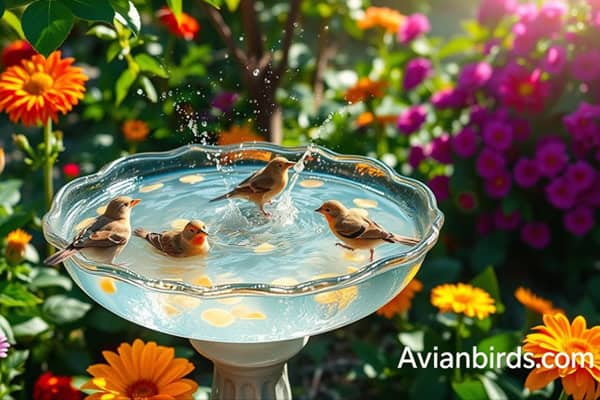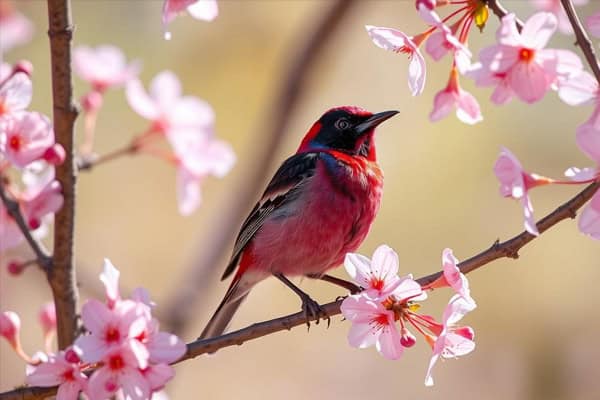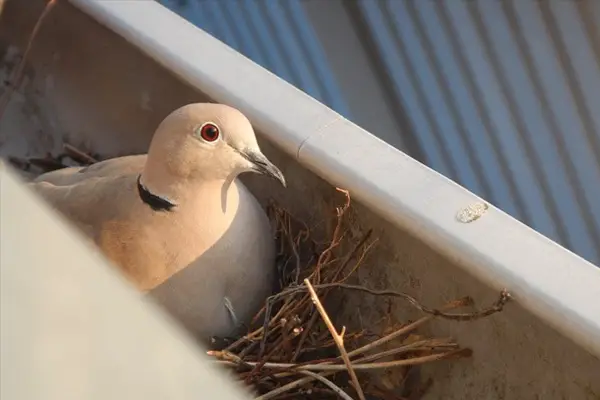Budgerigar: The Perfect Pet Parakeet
Do you know budgerigar, or budgies, can learn to mimic human speech? They can even learn dozens of words, sometimes in different languages. This makes them very popular pets, second only to dogs and cats.
These birds are known for their playful nature and bright colors. They are great for people new to bird ownership. They also fit well into family life.
Budgerigars come from Australia and love to be cared for. This article will cover everything you need to know about them. You’ll learn about their fun traits and how to keep them happy and healthy. Discover why many families in the U.S. love having a budgie as a pet!
Introduction to the Budgerigar
Budgerigars, also known as budgies, are small parrots that are part of the parakeet family. They are about 7 to 8 inches long, making them great for many homes. They come in many colors like white, blue, yellow, and more, adding color to your space.
These birds are friendly and fun, making them a favorite among bird lovers. They live in big groups in Australia, sometimes in huge numbers. They eat seeds and grasses and drink a lot of water, up to 5.5% of their body weight.
Budgerigars breed when it rains and can have many babies in a year. They lay 6 to 8 eggs at a time. They are monogamous, staying with their mates for life, which makes them great pets.
If you’re thinking about getting a budgie, they are full of joy. They are easy to care for and are perfect for both new and experienced bird owners.

| Characteristic | Details |
|---|---|
| Size | Approximately 7–8 inches long |
| Weight | 30–40 grams |
| Color Forms | White, blue, yellow, mauve, olive, grey |
| Average Lifespan | 10–12 years with proper care |
| Diet Composition | 60–70% pellets, 30–40% fruits/vegetables, 10% treats |
| Ideal Cage Size | Minimum of 18″W x 18″D x 18″H |
Why Choose a Budgerigar as Your Pet?
Choosing a budgerigar as a pet has many benefits. They are friendly and love to be around people. This makes them great pets for many lifestyles.
Budgies need less space than bigger birds but still offer lots of love. They are perfect for small homes like apartments. Their playful nature brings happiness to any place.
Budgerigars can even talk a little bit. This is a fun thing for new bird owners. They love to be around people and need attention.
If they don’t get enough attention, they might act out. This shows how important it is to spend time with them.
Budgies can live up to 15 years, making them a long-term friend. They have bright colors and fun personalities. They do best when they have a friend of their own.
By knowing what they need, you can enjoy having a budgie as a pet. It’s a rewarding experience.
| Benefit | Details |
|---|---|
| Social Nature | Easy bonding and playful interaction |
| Low Maintenance | Minimal living space required compared to larger birds |
| Speech Mimicking | Unique and engaging interactive experience |
| Long Lifespan | Can live up to 15 years or more with proper care |
| Companionship Needs | Thrives with social interaction and may need pair bonding |
Understanding the Budgerigar’s Characteristics
Learning about budgerigars can make you appreciate them more. They come in different sizes and looks. There are many types to choose from, depending on what you like.
Size and Appearance
Budgerigars are small, ranging from 7 to 9 inches. They are lively and fun to have around. In the wild, they are a bit smaller than those kept as pets.
Their colors are bright, with yellows and greens being common. But, there are also blues and whites from breeding. They look great and are full of energy, making them popular pets.
Types of Budgerigars
There are two main types of budgerigars: the Australian and the English. The English budgie is bigger, with larger heads and fluffier feathers. Each type has its own special qualities, so you can pick the one that suits you best.
| Type of Budgerigar | Average Size | Distinctive Features |
|---|---|---|
| Australian Budgerigar | 7 to 8 inches | Smaller size, standard feather texture |
| English Budgerigar | 8 to 10 inches | Larger heads, puffier feathers |
Caring for Your Budgerigar
To keep your budgerigar happy, focus on diet and housing. These are key to a healthy, joyful life for your bird.
Diet Requirements
Your budgie needs a balanced diet. High-quality pellets should be 75% of their food. Seeds and treats are okay, but only 5% of their diet.
Include fresh fruits and veggies for 20-25% of their food. But, avoid harmful foods like chocolate and avocado.
- Pellets: 60-70% of daily intake
- Fresh Vegetables and Greens: Daily
- Fruits: Limited to small portions
- Treats (Seeds): No more than 5%
Proper Housing and Environment
Choose a clean, spacious cage for your budgie. It should be at least 18 inches wide, deep, and high. Bars should be no more than ½ inch apart.
Keep the cage clean with fresh water daily. Clean it thoroughly once a week.
Include perches and toys to keep your budgie active. A warm, safe environment is best for their happiness.
| Diet Component | Recommended Percentage | Daily Requirement |
|---|---|---|
| Pellets | 60-70% | 75% of intake |
| Fresh Fruits & Vegetables | 20-25% | Variety daily |
| Treats (Seeds) | 5% | Limited |
By following these guidelines, you’ll ensure your budgerigar stays healthy and happy.
Training and Socializing Your Budgerigar
Training and socializing your budgerigar is key to their happiness. Start when they’re young, under one year. Use treats like millet sprays to make it fun.
Teaching Them to Talk
Budgerigars can mimic sounds and phrases. Training them to talk is fun. Be patient and keep the environment calm.
Repeat words and phrases often. Use treats to keep them motivated. Start with simple words and move to harder ones as they get better.
Importance of Interaction
Interaction with people is vital for your budgerigar’s social life. It keeps them happy and avoids bad behavior. Get friends and family to interact with your bird using treats.
Place the cage in a busy area. This lets your bird get used to different voices and movements.
| Activity | Description | Benefits |
|---|---|---|
| Hand Feeding | Involve others in feeding your budgie its favorite treats. | Fosters trust and encourages positive associations with different people. |
| Target Training | Teach your bird to step up on various hands. | Increases comfort with new people and aids in training. |
| Voice Acclimation | Introduce your budgie to diverse voices and sounds. | Helps the bird adapt to different environments and reduces fear. |
| Group Exposure | Socialize your budgie in both quiet and crowded settings. | Builds confidence and improves adaptability to new situations. |
With regular training and socializing, your budgerigar will thrive. Spending time together strengthens your bond. It also boosts their confidence and communication skills.
Health and Maintenance for Budgerigars
Keeping your budgerigar healthy needs dedication and knowing about vet care for budgies. Regular vet visits are key to keeping your bird healthy. These visits help vets spot health problems early.
Regular Veterinary Care
Make sure to see an avian vet once a year. Birds often hide signs of illness until it’s too late. Blood tests and fecal checks during vet visits can find hidden issues.
These tests help catch infections or diet problems early. This way, your budgie can live a long, happy life.
Identifying Common Health Issues
Watching your budgerigar closely is important. Look for changes in appetite, tiredness, or too much feather plucking. Budgies can face many health problems, like:
- Obesity
- Liver disease
- Gastrointestinal parasites
- Respiratory issues
- Mites
Spotting these signs early can make a big difference. Knowing how to care for your budgie helps them stay happy and healthy.
Read More🐦Related Articles:
| Blue Parrot Species to Keep as Pets |
| Woodpeckers in Florida |
| Woodpeckers in Arkansas |
| Barn Swallow: Everything You Need To Know |
| Doves in Kansas |
Conclusion
Budgerigars are amazing pets. Also, They have bright colors and fun personalities. They can become great friends in your home.
They can even talk like humans. Their playful nature has brought joy for many years.
To care for a budgerigar, you need to know a few things. They need a good diet, a clean home, and vet visits. This will keep them happy and healthy.
Watching a budgerigar can be very interesting. They are smart, social, and love to talk. They are popular pets, just like dogs and cats.
Your budgerigar can bring laughter and love for 10 to 15 years with love and care.
Frequently Asked Questions
Q1. What is a Budgerigar?
A Budgerigar, also known as a budgie or parakeet, is a small, colorful bird native to Australia, popular as a pet worldwide.
Q2. How long do Budgerigars live?
In captivity, budgerigars typically live between 5 to 10 years, but with excellent care, they can live up to 15 years.
Q3. What do Budgerigars eat?
Budgerigars eat seeds, fresh vegetables, fruits, and specially formulated pellets. A balanced diet is important for their health.
Q4. Are Budgerigars social?
Yes, budgerigars are very social birds. They enjoy the company of other birds and human interaction.
Q5. How can you tell if a Budgerigar is male or female?
Males usually have blue ceres (the area above the beak), while females often have brown or tan ceres.






